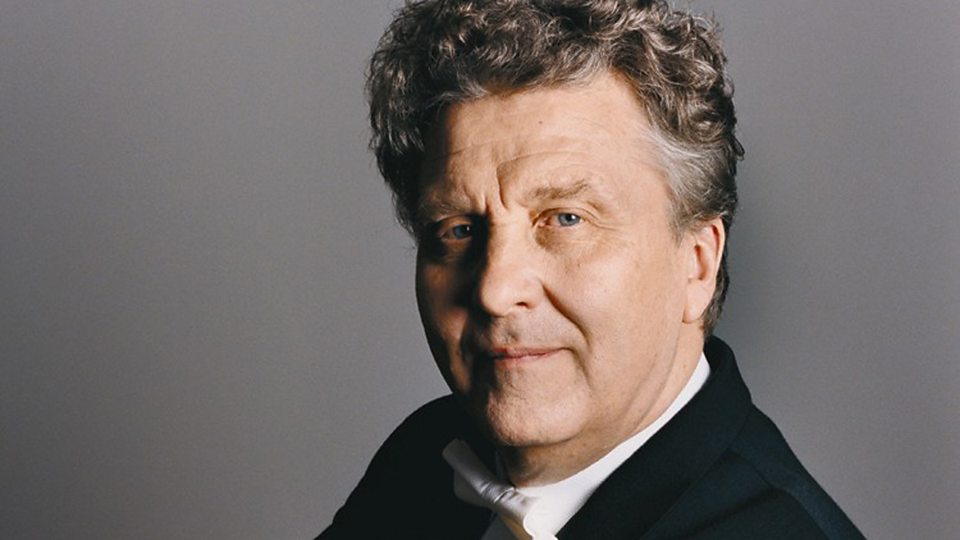Russian worlds collide in contrasted rarities from Sinaisky, Utah Symphony

Vassily Sinaisky conducted the Utah Symphony in music of Shotsakovich and Rachmaninoff Friday night at Abravanel Hall.
This weekend’s Utah Symphony concerts explore Russian/Soviet music, with a short side trip to Hungary.
On the program are Shostakovich’s Symphony No. 12, “The Year 1917,” Rachmaninoff’s Piano Concerto No. 4 and Kodály’s Dances of Galánta.
Under the baton of guest conductor Vassily from the Shostakovich was given an expansive reading Friday evening at Abravanel Hall, capturing the energy and drama of what is one of the composer’s lesser known symphonies, at least in the United States.
The progrmmatic work is dedicated to Lenin and depicts the early stages of the Russian Revolution, with a stop at Lenin’s countryside headquarters, a brief tribute to the ship that fired the first shots at the Winter Palace, and finally, a vision of a new, post-revolution Soviet Union.
The Russian conductor made a strong case for the Twelfth Friday night. His account was powerful and brought out the spirit of each of the four movements.
The opening movement, “Revolutionary Petrograd,” was filled with a robustness that made the revolutionary sentiment stand out with stark power. Sinaisky coaxed decisive, well-articulated playing from the orchestra, and he deftly balanced the different sections of the ensemble without letting the brass and expanded percussion overwhelm the winds and strings.
The slow movement, “Razliv,” Lenin’s headquarters outside of Petrograd, brought some much-needed repose to the preceding. Sinaisky let the music unfold slowly and gave it an almost dream-like quality. The playing was seamlessly lyrical and wonderfully expressive.
The third movement, “Aurora,” the name of the ship that fired on the Winter Palace, captured the tension and drama of the moment, with Sinaisky giving a lucid and well-defined account of this brief movement.
The finale, “Dawn of Humanity,” is perhaps the least satisfying of the four movements—to the extent that one has to wonder whether or not Shostakovich truly believed that the revolution ushered in a new and better world for himself and his countrymen. Still, Sinaisky perceptively underscored the scope, dynamics and dramatic power of this triumphal music, making a powerful statement, with the orchestra playing to its fullest potential.
Pianist Simon Trpceski, making his Utah Symphony debut, gave a masterful reading of Rachmaninoff’s Fourth Piano Concerto. A rarely heard work, which gets lost next to the Second and Third Concertos, the Fourth is a dazzling work that puts the soloist’s technical chops on display.
Trpceski didn’t disappoint in that regard. He is a pianist in full command of his instrument and an artist who has technique and musicality in equal proportions.
The Macedonian pianist, exhibiting dynamic stage presence, played the opening movement with vigor and virtuosity, but without losing sight of the lyrical element of the music. It was a remarkable balancing act of virtuosity and finely honed expressiveness.
The slow movement, based on a simple theme, was given an imaginative treatment by the soloist, whose part embellishes and enhances the simplicity of the tune. Trpceski made the most of this, playing with finesse and gorgeously crafted lyricism.
Trpceski played the lively finale with bold strokes and an ebullience that captured the energy and vitality of the music.
Throughout the concerto, Sinaisky mirrored the soloist’s intense passion with his sensitive direction. And once again, he elicited crisp and vibrant playing from the orchestra.
As an encore, Trpceski switched gears and gave a delightful account of the “Dance of the Sugar Plum Fairy” from Tchaikovsky’s The Nutcracker, which he dedicated to University of Utah pianist Vedrana Subotic.
The concert opened with the Dances of Galánta. Sinaisky let the orchestra shine in his account that perfectly captured the contrasting character of each of the five movements—from expansive lyricism to robust, rhythmic exuberance.
There were several wonderfully played solos throughout the 15-minute piece, notably clarinetist Tad Calcara, flutist Mercedes Smith, hornist Edmund Rollett, oboist James Hall and bassoonist Lori Wike.
The program will be repeated 5:30 p.m. Saturday in Abravanel Hall. utahsymphony.org; 801-355-2787.